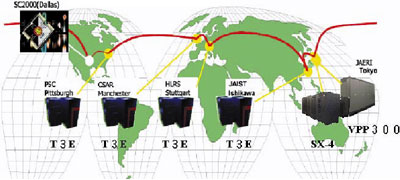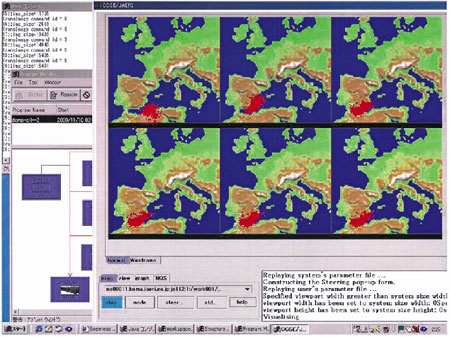With the advance of information technology it becomes possible to construct a single large "virtual" computer system with high performance by connecting innumerable computers in the world, and to carry out a gigantic computation (network computing). It is a matter of course that, in order to carry out a practically meaningful computation, there are various problems to be solved including administrative or political ones as well as technological problems. Up to now, therefore, only small-scale projects of experiments on such network computing have been carried out. By taking a good opportunity at the International Conference of Supercomputers (SC2000) held at Dallas, USA, we made an attempt to construct such a large-scale virtual computer system composed of many computers of the leading research institutes in the world and succeeded in carrying out a gigantic computation. Our experiment was to analyze the data of the Cs137 pollution accident at Algeciras, Spain, on May of 1998 and to determine the pollution source by using a single large "virtual" computer composed of 510 CPUs of parallel computers of 5 research institutes in the USA, UK, Germany and Japan (Fig. 10-7).
This is a very fruitful experiment not only because we have succeeded in large-scale network computing but also because we have demonstrated that our products, i.e., the radioactive pollution source determination program, the parallelization library for different computers, the real-time visualization system are effectively used even for such network computing. Especially as the algorithm of the radioactive pollution source determination program suits parallel computing well, it displayed the great ability to determine the pollution source and confirmed the practicability of the program (Fig. 10-8). |


